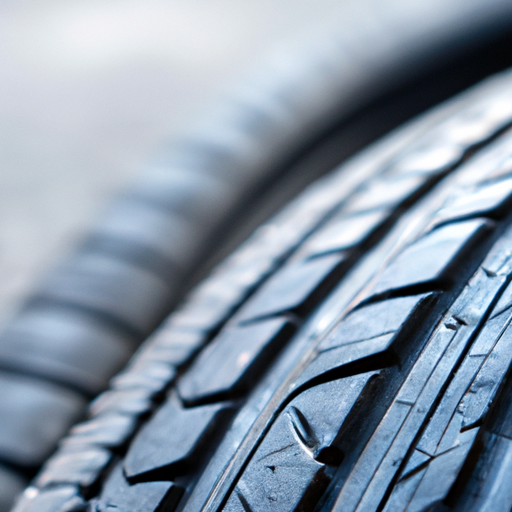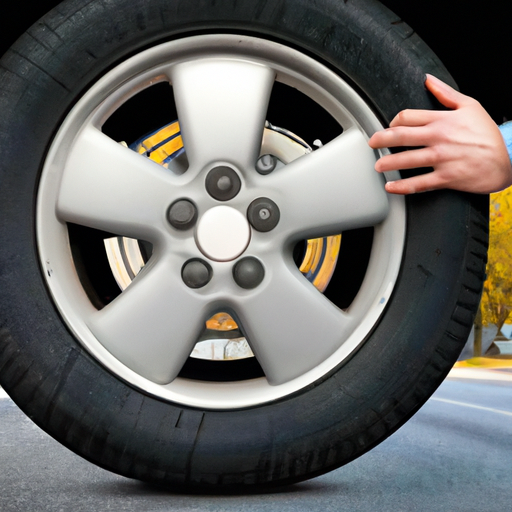When it comes to maximizing your fuel efficiency, every little detail counts – even the air pressure in your tires. Did you know that underinflated tires can have a significant impact on how much fuel your vehicle consumes? That’s right! In this article, we will explore the relationship between underinflated tires and fuel efficiency, and how you can ensure your tires are properly inflated to save money at the pump. So sit back, relax, and get ready to learn about this often overlooked aspect of maintaining your car’s performance.

Can Underinflated Tires Affect Fuel Efficiency?
If you have ever wondered whether underinflated tires can affect fuel efficiency, the answer is a resounding yes. Proper tire inflation is essential not only for safety and performance but also for optimizing fuel efficiency. In this article, we will explore the impact of underinflated tires on fuel efficiency, how to measure fuel efficiency, factors influencing tire pressure, optimal tire pressure, the benefits of proper tire inflation, potential risks of underinflated tires, and tips for maintaining proper tire inflation.
Understanding Underinflated Tires
Definition of Underinflated Tires
Underinflated tires refer to tires that have insufficient air pressure compared to the recommended level specified by the vehicle manufacturer. When tires are underinflated, they cannot perform optimally and may pose safety risks.
Causes of Underinflated Tires
There are several reasons why tires may become underinflated. One common cause is gradual air loss over time due to the permeability of tire rubber. Other causes include temperature fluctuations, leaks in the tire or valve stem, and improper inflation during tire maintenance.
Effect of Underinflated Tires on Fuel Efficiency
Increased Rolling Resistance
Underinflated tires have a larger contact patch with the road surface, resulting in increased rolling resistance. When the rolling resistance is higher, your vehicle’s engine has to work harder to maintain the same speed, leading to a higher fuel consumption rate. In fact, studies have shown that underinflated tires can decrease fuel efficiency by up to 5%.
Decreased Tire Lifespan
Underinflated tires also experience uneven tread wear, leading to a shorter lifespan. When tires do not have the correct pressure, the contact with the road is uneven, causing certain areas of the tread to wear out faster than others. This uneven wear not only reduces the tire’s overall lifespan but also compromises safety and handling.
Measuring Fuel Efficiency
Importance of Measuring Fuel Efficiency
Measuring fuel efficiency is crucial for understanding the impact of various factors on your vehicle’s performance. It helps you identify potential issues, track fuel consumption patterns, and make informed decisions regarding your driving habits and maintenance routine.
How Fuel Efficiency is Measured
Fuel efficiency is commonly measured in terms of miles per gallon (MPG) or liters per 100 kilometers (L/100km). To calculate fuel efficiency, you divide the distance traveled by the amount of fuel consumed. Modern vehicles often have built-in fuel efficiency monitors that provide real-time information, while older vehicles may require manually tracking fuel and mileage.

Factors Influencing Tire Pressure
Air Temperature
Temperature changes affect tire pressure. As air cools, it contracts, resulting in decreased tire pressure. Conversely, hot weather causes air to expand, leading to increased tire pressure. Therefore, it is essential to regularly check tire pressure and adjust it accordingly based on the prevailing temperature.
Driving Conditions
Different driving conditions can impact tire pressure. For instance, driving on rough terrains or pothole-ridden roads can cause sudden changes in tire pressure due to impacts and vibrations. Furthermore, aggressive driving habits such as hard braking and accelerating can increase tire temperature, leading to higher pressure. It is important to consider these factors when maintaining optimal tire inflation.
Tire Type and Size
Different tire types and sizes have varying recommended inflation pressures. It is crucial to adhere to the manufacturer’s recommendations for your specific tires. Using the wrong pressure can result in uneven wear, compromised handling, and reduced fuel efficiency.
Optimal Tire Pressure
Manufacturer’s Recommendations
The optimal tire pressure for your vehicle can typically be found in your vehicle’s owner’s manual or on a sticker located on the driver’s side door jamb, glove compartment, or fuel filler door. The recommended pressure is specific to your vehicle make, model, and tire size. It is important to follow these recommendations for optimal fuel efficiency and safety.
Effects of Overinflated and Underinflated Tires
Both overinflated and underinflated tires can have detrimental effects. Overinflated tires may result in a harsher ride, reduced traction, and uneven wear in the center of the tread. On the other hand, underinflated tires can lead to decreased fuel efficiency, compromised handling, and increased risk of tire failure. Maintaining the optimal tire pressure is crucial to avoid these issues.

Benefits of Proper Tire Inflation
Improved Fuel Efficiency
Properly inflated tires reduce rolling resistance, allowing your vehicle to move more efficiently. This translates to improved fuel efficiency, saving you money at the pump. By simply maintaining the recommended tire pressure, you can potentially increase your fuel efficiency by up to 3%.
Enhanced Vehicle Handling
When tires are inflated to the recommended pressure, they provide the optimal contact patch with the road, ensuring better vehicle handling and stability. Properly inflated tires improve steering response, cornering capabilities, and overall control of your vehicle.
Increased Tire Lifespan
Proper tire inflation promotes even tread wear, extending the lifespan of your tires. By evenly distributing the forces exerted on the tread, you can prevent premature wear and damage. This not only saves you money but also ensures a safer driving experience.
Potential Risks of Underinflated Tires
Reduced Traction
Underinflated tires have a smaller contact patch with the road, resulting in reduced traction. This can lead to longer stopping distances, decreased control in wet or icy conditions, and an increased risk of skidding or hydroplaning. Proper tire inflation is vital for maintaining optimal traction and keeping you safe on the road.
Risk of Tire Failure
Underinflated tires are more susceptible to overheating, which can cause them to fail. The increased heat generated from the flexing of the sidewalls and excessive rolling resistance can lead to blowouts or tread separation. Regularly monitoring and maintaining proper tire inflation helps prevent these dangerous situations.

Tips for Maintaining Proper Tire Inflation
Regular Tire Pressure Checks
It is essential to check your tire pressure at least once a month and before embarking on long trips. Use a reliable tire pressure gauge to measure the pressure when the tires are cold, as warm tires can give inaccurate readings. If the pressure is not within the recommended range, inflate or deflate the tires as necessary.
Using a Reliable Tire Pressure Gauge
Investing in a quality tire pressure gauge is essential for maintaining accurate readings. Choose a gauge that is easy to use, accurate, and suitable for your tire type. Digital gauges are often preferred for their precision, ease of use, and clear display.
Conclusion
Underinflated tires can significantly impact fuel efficiency, vehicle handling, and tire lifespan. By regularly monitoring and maintaining proper tire inflation, you can enjoy improved fuel efficiency, increased safety, and cost savings in the long run. Don’t underestimate the importance of properly inflated tires – keep them properly inflated and enjoy a smoother, safer, and more fuel-efficient ride.


